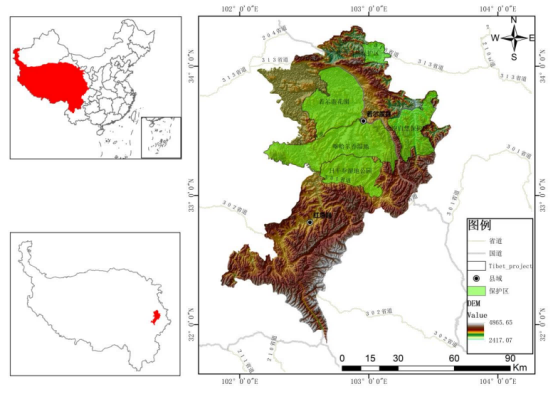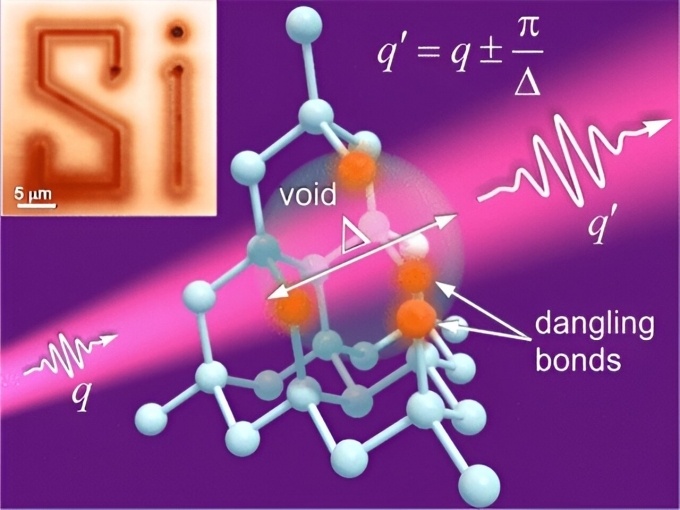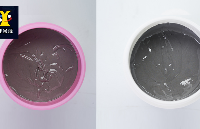ETNew, Odd Species Discovered Down South Video Research in Action
A new species of sea anemone, Edwardsiella andrillae, anchored in the ice at the underside of the Ross Ice Shelf, Antarctica one anemone has an unidentified organism, nicknamed the “eggroll,” holding on to it. Credit: NSF. View full size image
This Research in Action article was provided to LiveScience in partnership with the National Science Foundation.
Whileusing a camera-equipped robot to survey the environment under Antarctica‘s Ross Ice Shelf, paleoclimate researchers unexpectedly discovered a species of sea anemones that live in the ice.
The team of scientists and engineers, who are part of the National Science Foundation (NSF)-funded Antarctic Geological Drilling (ANDRILL) Program, reported that there were thousands upon thousands of the small anemones.
Though other sea anemones have been found in Antarctica, this species is the first reported ice dweller. While most sea anemones live on or in the seafloor, these anemones live upside down, burrowed in ice, their tentacles protruding into frigid water like flowers from a ceiling.
The white anemones have been named Edwardsiella andrillae, in honor of the ANDRILL Program.
Scott Borg, who heads the Antarctic Sciences Section in NSF’s Division of Polar Programs, noted that the discovery illustrates how much remains both unknown and unexplored by scientists, even after more than 50 years of active U.S. research on the southernmost continent.
The discovery was “total serendipity,” said Frank Rack, executive director of the ANDRILL Science Management Office at the University of Nebraska-Lincoln. “When we looked up at the bottom of the ice shelf, there they were.”
Scientists had lowered the robot — a 4.5-foot cylinder equipped with two cameras — into a hole bored through the 270-meter-thick shelf of ice that extends over 600 miles northward from the grounding zone of the West Antarctic Ice Sheet into the Ross Sea.
Their mission was to provide environmental data for modeling the behavior of the ANDRILL drill string (a length of pipe extending through the water column and into the sea floor through which drilling fluids are circulated and core samples retrieved)。 They didn‘t expect to discover organisms in the ice, and surely not a new species.
This remotely operated vehicle, known as SCINI (Submersible Capable of under Ice Navigation and Imaging) travels under the Antarctic ice to photograph benthic communities. It was used by researcher Stacy Kim for her biological research and, with modification, by ANDRILL in the discovery of the new sea anemone species.Credit: Dr. Stacy Kim, National Science Foundation.View full size image
The anemones measured less than an inch long in their contracted state — though they get three to four times longer in their relaxed state, researchers said. Each features 20 to 24 tentacles, an inner ring of eight longer tentacles and an outer ring of 12 to 16 tentacles.
Many mysteries remain about the creatures, such as how they burrow into hard ice, survive without freezing and how they reproduce. There is no evidence of what they eat, although they likely feed on plankton in the water flowing beneath the ice shelf, researchers said.
In addition to the anemones, the scientists saw fish that swam upside down, the ice shelf serving as the floor of their submarine world, as well as a bizarre little creature they dubbed “the eggroll,” a four-inch-long cylinder that seemed to swim using appendages at both ends of its body.
自动翻译仅供参考
在南极发现新奇物种 ETNew,奇种发现南下视频研究Action
海葵,爱德华andrillae,停泊在冰中的
海葵的一个新种,Edwardsiella andrillae,被锚定在南极罗斯冰架的冰下,一头海葵有一种未知的有机体,绰号“EgGrl”,紧紧抓住它。图片来源:美国国家科学基金会。查看原图
本研究在行动文章提供给生活科学合作与美国国家科学基金会。
Whileusing带摄像头的机器人调查在南极罗斯冰架环境,古气候研究人员意外地发现一个物种海葵那住在冰。
科学家和工程师,谁是美国国家科学基金会(NSF)的一部分的团队资助的南极地质钻探(ANDRILL)计划,报告说,成千上万的小海葵。
虽然其他海葵已经在南极洲被发现,这个品种是首次报道的冰居民。虽然大多数海葵住上或在海底,这些海葵生活颠倒,钻地的冰,他们的触角伸进冰冷的水一样从天花板。
花
白色的海葵被命名为爱德华andrillae,以纪念ANDRILL计划。
Scott博格,谁负责的南极科学科极地项目NSF司获悉,此次发现说明了仍有许多未知双方并未开发的科学家,即使在50年以上的大陆最南端美国积极的研究。
发现是 总情缘, 弗兰克说机架中,ANDRILL科学管理办公室在内布拉斯加 - 林肯大学的执行董事。 当我们抬头看着冰架底部,他们在那里与
科学家们已经降低了机器人 mdash 一个4.5英尺的汽缸配有两个摄像头 mdash 到通过270米厚的陆架冰的从南极西部冰原到罗斯海。
的接地区域600英里向北延伸钻一个洞,
他们的任务是为模拟的行为提供了环境数据ANDRILL钻柱(管通过水柱和入海底,通过该钻井液被循环和岩心样品检索延伸的长度)。他们没想到发现了冰的有机体,而当然不是一个新的物种。
该遥控潜水器,称为SCINI(潜水还能在冰上导航和成像)南极冰层下前往拍摄底栖生物群落。这是在新的海葵species.Credit的发现所使用的研究员斯泰西金为她的生物学研究,并与修改,通过ANDRILL:斯泰西Kim博士,美国国家科学Foundation.View原图
海葵测不到一个在其收缩状态 mdash英寸长 虽然他们拿到三四倍的时间在他们的松弛状态,研究人员说。每间都设有20至24触角,八长触须内圈和12至16触角外圈。
许多未解之谜依然看好的生物,比如他们如何钻入坚冰,生存无严寒以及它们是如何繁衍后代。目前没有证据表明他们吃的东西,虽然他们在流动冰架下方的水中浮游生物可能的饲料,研究人员说。
除了海葵,科学家们看到鱼游倒挂,冰架作为地板的海底世界,还有一个奇怪的小生物,他们被称为 在eggroll, 四英寸长的圆柱体,似乎使用的附属物,在它的身上.
-
机器人
+关注
关注
210文章
28063浏览量
205755
发布评论请先 登录
相关推荐
PCM1803采样音频,在还原数据时发现采样的音频被放大了3倍,为什么?
使用PCM1804时,发现ADC在转换过程中产生3次谐波较大,为什么?
借助AI拓展营销和创意潜能
LM2903B有击穿现象的原因?
基于无人机高光谱谣感的蕴地退化指示物种的识别

元服务体验-服务发现
台积电嘉义CoWoS厂施工暂停,疑似发现古遗迹
ECAD无法PUSH,疑似文件过大
业界首款柔性算力新物种,当属华为云新上市的云耀 X 实例

研究团队发现光的新特性

通过大小鼠无创血压测量实验明白了无创血压测量技术的重要性
中国南极昆仑站首度进行近红外天文学观测及全时段近地空间环境监测
广州新赛格电子城疑似停业,一个时代的落幕?

SWM166圆形旋钮屏一款新奇的功能板
在焊接过程中发现锡膏太稀怎么办?





 在南极发现疑似海葵的新奇物种
在南极发现疑似海葵的新奇物种










评论